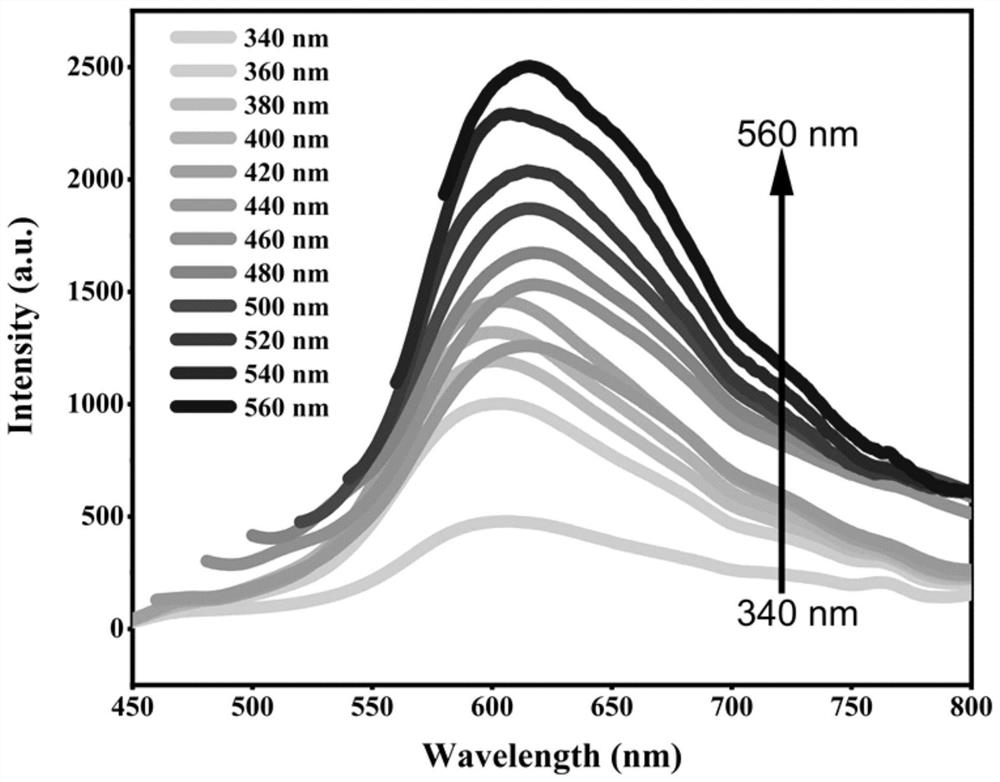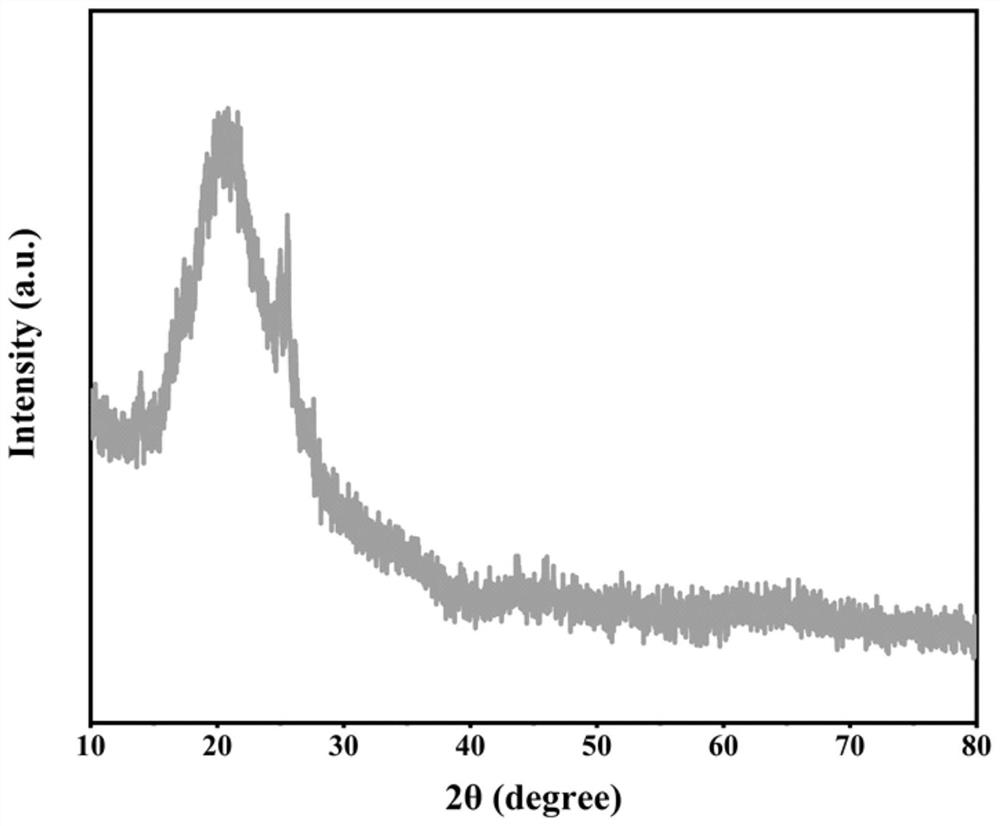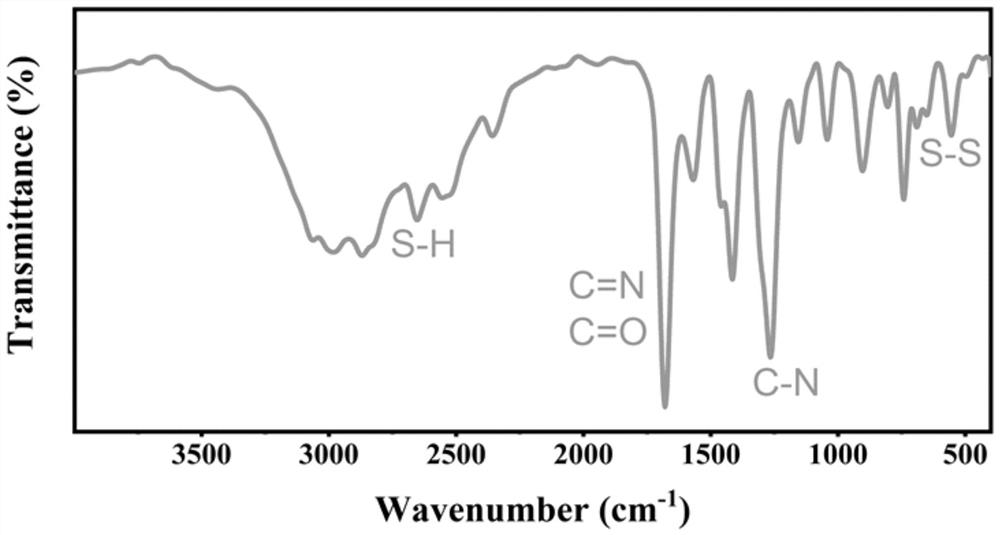Application of oil-soluble carbon dots in fingerprint detection
A fingerprint detection and oil-soluble technology, which is applied in the field of nanomaterials, can solve the problems of low resolution and less reporting of oil-soluble carbon dots, and achieve good results, environmentally friendly methods, and strong applicability
- Summary
- Abstract
- Description
- Claims
- Application Information
AI Technical Summary
Problems solved by technology
Method used
Image
Examples
Embodiment 1
[0025] Embodiment 1: the preparation of oil-soluble carbon dot
[0026] First, add 501.0mg of dithiosalicylic acid into 50ml of acetic acid solution and stir until completely dissolved, then add 2.5mL of ethylenediamine, stir for 2h, then transfer the mixed solution into a reaction kettle, heat to 170°C and keep it for 10h; naturally cool to After room temperature, the reacted solution was poured into 1L of boiling water, filtered, and dried in an oven at 60°C to obtain pure oil-soluble carbon dots.
[0027] figure 1 It is the fluorescence spectrum of oil-soluble carbon dots. It can be seen from the figure that the carbon dots have no obvious excitation-dependent phenomenon. Its emission wavelength does not redshift with the redshift of the excitation wavelength. The luminescent center of the carbon dots is always in the red light region of 620nm. Optimal excitation is at 560nm. figure 2 It is an XRD pattern of oil-soluble carbon dots, and the diffraction peak centered at 2...
Embodiment 2
[0028] Embodiment 2: Preparation of time detection label
[0029] First wash your hands with soap and water, then use your fingers across your forehead, and press them on substrates such as glass, paper, and plastic sheets; then use the classic powder spray method to sprinkle the oil-soluble carbon dots obtained in Example 1 on the fingerprints. ; Next, use a brush to gently wipe off the excess powder; finally, the bright red fingerprint fluorescent pattern can be clearly seen under the ultraviolet light. Figure 5 A fingerprint map is shown, from which obvious fingerprint features can be observed, including bows, rings, and wheels. The six parts of the fingerprint prepared by carbon dots were amplified, and the characteristic points of bifurcation, island, termination, eye, nucleus, ridge divergence and intersection were observed respectively.
PUM
 Login to View More
Login to View More Abstract
Description
Claims
Application Information
 Login to View More
Login to View More - R&D
- Intellectual Property
- Life Sciences
- Materials
- Tech Scout
- Unparalleled Data Quality
- Higher Quality Content
- 60% Fewer Hallucinations
Browse by: Latest US Patents, China's latest patents, Technical Efficacy Thesaurus, Application Domain, Technology Topic, Popular Technical Reports.
© 2025 PatSnap. All rights reserved.Legal|Privacy policy|Modern Slavery Act Transparency Statement|Sitemap|About US| Contact US: help@patsnap.com



